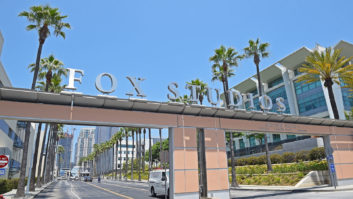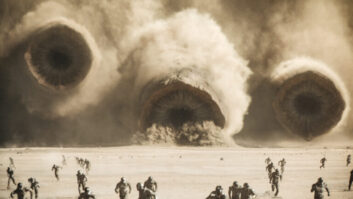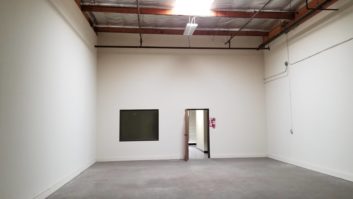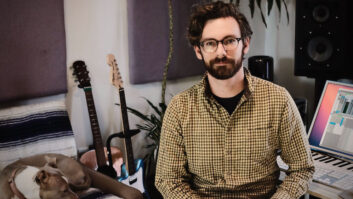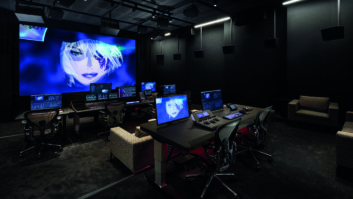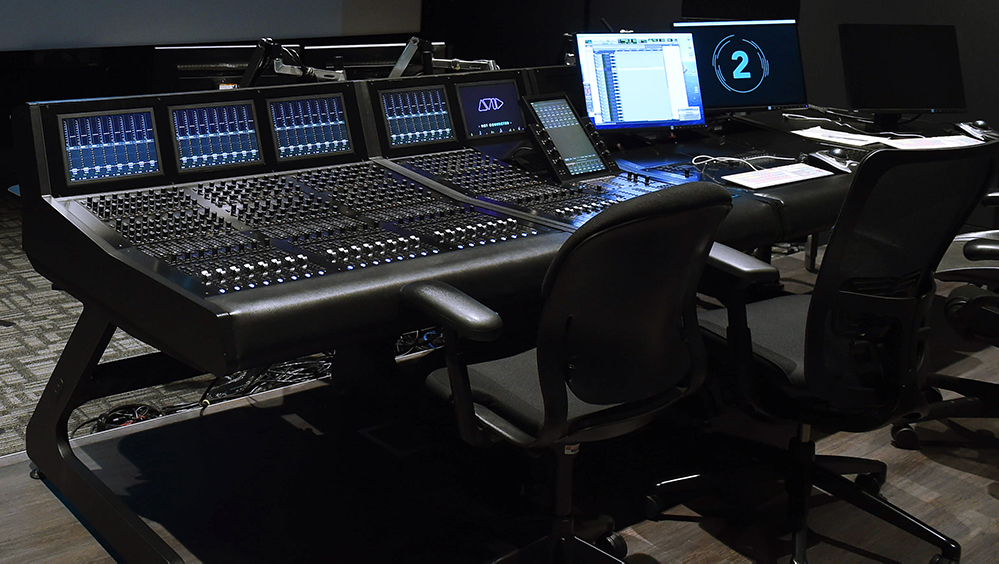
Los Angeles, CA (April 29, 2024)—The Fox Studio Lot is iconic, the first complete facility built specifically for motion picture production and one of the cornerstone movie studios of the Golden Age of Hollywood. The studio’s roots go back to 1924, when co-founder William Fox purchased the land on which the lot sits. In 1935, Fox Films merged with Darryl F. Zanuck’s 20th Century Pictures to create 20th Century Fox. This is the studio that gave the world such classics as Miracle on 34th Street, The Seven Year Itch and The Sound of Music. The facility subsequently became a television powerhouse as well, spawning The Simpsons and hosting productions for some of the most-watched shows in primetime, including M*A*S*H and 9-1-1.
In 2019, Fox Corporation sold 20th Century Fox along with other film and TV assets to Walt Disney Co. and retained ownership of the Fox Studio. Last year, Fox announced that it would embark on a long-term project on the Lot dubbed Fox Future, to invest in new and improved facilities, attract more production work and create more jobs.
The centerpiece of the plan is a buildout of new soundstages to meet the seemingly insatiable demand for film and TV production. Fox Future also calls for an expansion of the lot’s post-production facilities and other amenities. The Barbara McLean Stage, which opened just prior to the plan’s announcement, is pictured on this month’s cover.
Today, the entire studio lot, not just the postproduction sound department, has become a creative hub, says 24-time Oscar nominee Andy Nelson, SVP of Sound Operations and re-recording mixer with Fox Studio Lot Post Production Services. Sitting at the console in one of the lot’s main mixing stages, Nelson, who won Best Sound Oscars for Saving Private Ryan and Les Misérables, says, “When it was 20th Century Fox, there was a natural pipeline through this building, so in some ways it’s very freeing for us now to be independent.
I think of it as a real campus where anyone can come and do anything associated with making a film or a TV show. We’re just one part of that, but we’re an important part, because we can provide all the sound work that anyone needs to finish their picture.”
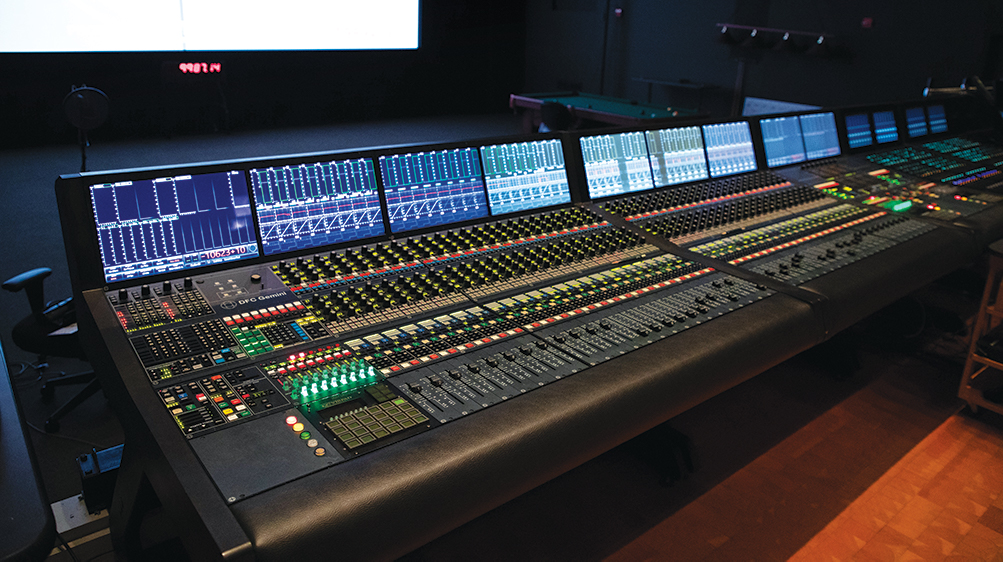
FOUNDATION OF FOX SOUND
When Nelson arrived from Todd-AO in the late 1990s to work at Fox, the 1930s-vintage shooting stages that now house the mix rooms were being used for storage and wardrobe. At the time, the huge, old-fashioned movie theaters, both for post-production and exhibition, were fading away and being replaced by smaller cinemas.
During the transition, Fox built two stages, identical but with mirror-image layouts and each with a floorplan of about 2,300 square feet. They were named in honor of film directors Howard Hawks and John Ford.
“I loved the size of these rooms,” Nelson recalls. “When I saw the graphs from the acousticians, I said, ‘These are going to be great,’ and they were. They had to put very little EQ into the rooms to make them play. We’ve had soundtracks come out of these rooms year after year and I’ve heard them all over the world—and they play really well.”
A slightly smaller room, named for director Robert Wise, was built upstairs, initially to support the two larger stages. “I always envisioned it would be for pre-mixing,” Nelson notes, “but it’s ended up being a catch-all for everything because it’s great for final mixing as well. We had sound transfer here, and it went away when everything went digital, so we had extra space at the end of the corridor. Recently, I said, ‘This would be great for a smaller, streaming-style room.’ That’s when we conceived the McLean stage. It’s not like a living room, but it’s certainly closer to the dimensions that you’d expect.”
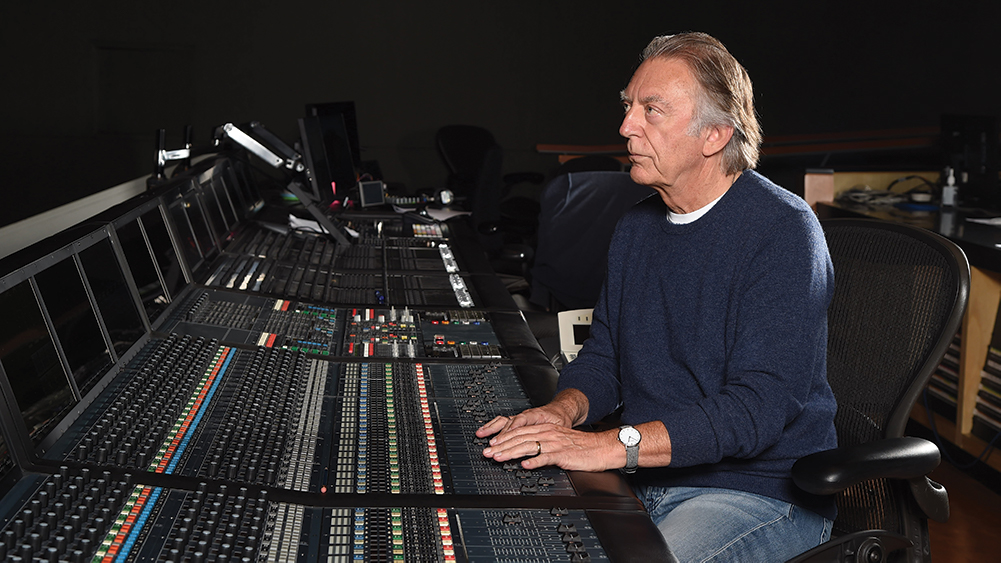
INSIDE THE MCLEAN STAGE
Named for film editor Barbara McLean, who was chief picture editor under Daryl F. Zanuck, the stage is appropriately sized for mixing streaming and television shows for the home environment. It includes both Dolby Atmos theatrical and home entertainment RMUs, and is also used for theatrical pre-dubbing and music mixing.
Peter Grueneisen, founder of nonzero\architecture, oversaw the architectural design for the entire sound department refurbishment. “Working together with Peter and Dolby [on the McLean], we came up with the layout for the speakers, the acoustical treatment and isolation,” chief engineer Marc Gebauer explains. “Then we brought in Salter and Associates. They shot the Hawks, Ford and Wise Stages, which are all very popular rooms for us, and came up with some acoustic changes for us to make in the McLean,” to ensure consistency and translation between the rooms.
Gebauer also consulted with renowned Oscar-winning score mixer Shawn Murphy. The pair have known each other, and worked together, for decades.
“I said that if the budget allows, it would be great to have it be a proper music mix facility,” Murphy says. To that end, the room is set up for multiple Atmos formats, as well as 7.1 and 5.1 and the high resolutions—96 kHz and above—favored by music engineers. “Marc did a really good job of making the McLean the most flexible, adaptable and great-sounding space. I have nothing but good things to say about the tuning and the way the room sounds.”
The McLean features Meyer Bluehorn speakers behind the screen, a decision encouraged by Murphy, who has been using the monitors for several years. “I think they’re the best tool we have in our kit, totally accurate and translatable,” he comments.
Gebauer elaborates, “We first started evaluating them on the Newman Scoring Stage and were just amazed with the clarity. We installed the Bluehorns on the Newman in early 2020, and they just seemed to take a layer away between what’s on the stage and what you hear in the control room.” All four stages feature Meyer Sound HMS cinema surround speakers on the ceilings and walls.
Gebauer’s team installed a BSS system to manage the surround and height speakers via Dante in the McLean. They also integrated an Avid MTRX supporting 800-plus I/O to act as the central router and interface to the master recorder. The stage sports two playback and two record Pro Tools HDX rigs.
The stage came online during the mixing of West Side Story, Murphy reports. “We did all the finals there, and all the Indiana Jones mixes, as well. I’ve probably done a dozen projects in there, both for film and for audio-only Atmos.”
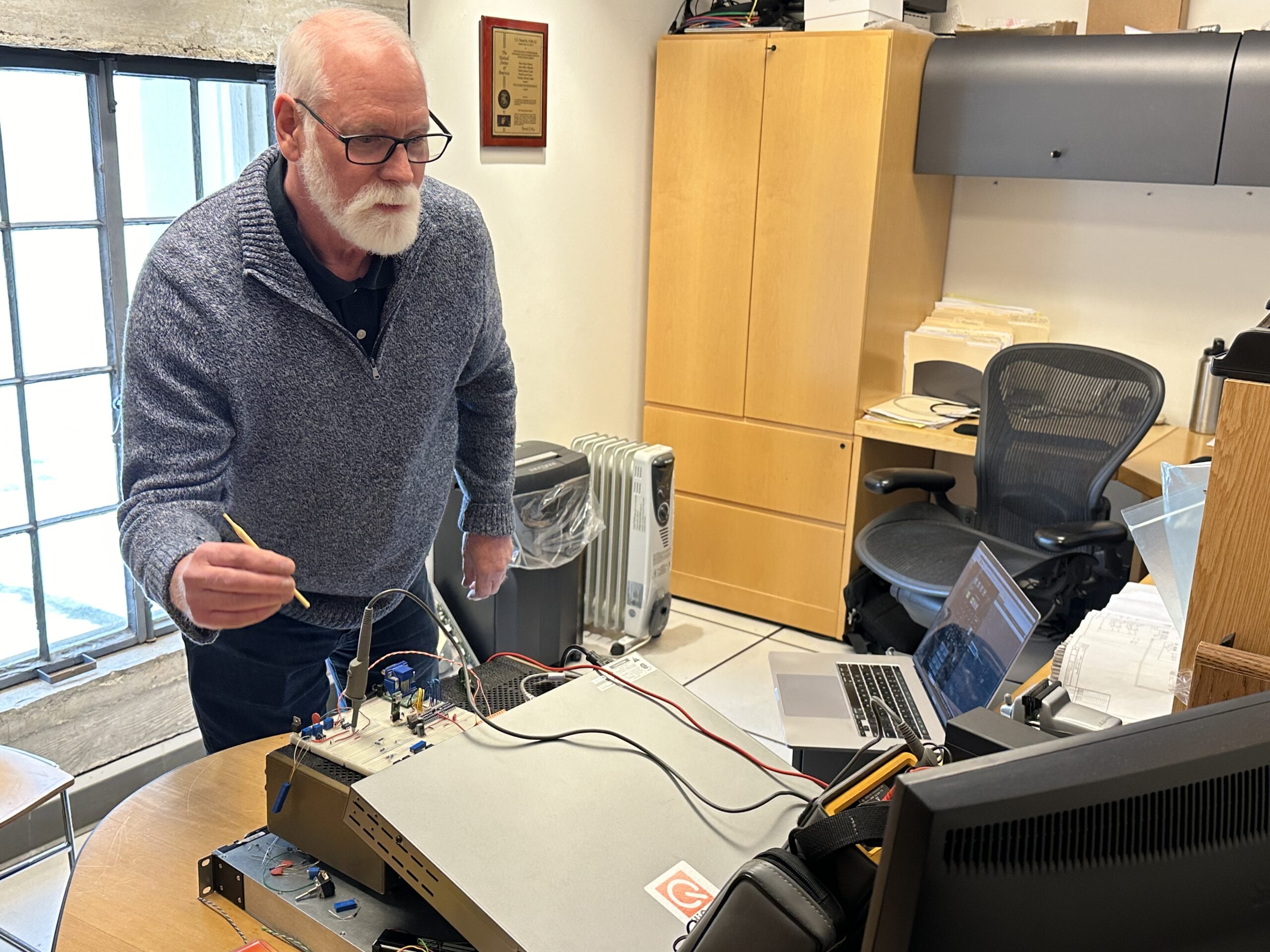
AVID? NEVE? BOTH?
In the three larger dub stages, sections of the AMS Neve DFC-3D Gemini mixing consoles—96-fader surfaces in the Ford and Hawks, 64-faders in the Wise, all with 1,000-path dual engines—can also be swapped out with Avid S6 surfaces according to a mixer’s preference. Nelson knows which he prefers when he’s mixing dialog and music: “I still use the traditional Neve DFC console, which has been my baby from the beginning. They are still the most magnificent consoles in the world.”
It’s unusual to see only a DFC on a Fox stage, he continues: “More and more people are using the S6s and in-the-box tools, but I’d rather stick with what I know. I’m fast on it, it’s reliable and it sounds like nothing else on Earth—why change?”
The three larger stages each include a Stagetec Nexus audio router with a 4,096 x 4,096 I/O matrix. “It wraps itself around all the players and recorders and the DFC,” Gebauer explains. The Ford and Hawks each house five playback and three record Pro Tools HDX systems; the Wise has one fewer record machine. All three stages were upgraded to 4K projection this year and can play video out of an R&S Clipster machine or via an AJA card in Pro Tools.
The Ford and Hawks Stages can handle a variety of playback formats, from Atmos to IMAX to Barco. The Wise Stage is equipped for Atmos and 7.1 surround monitoring and can be set up for 7.1.6 nearfield monitoring with JBL 7 Series speakers on stands. “We added six nearfield speakers on the ceiling, and I’ve just integrated the Avid MTRX, so now they can control the monitoring directly from the S6 master section,” Gebauer says. He plans to integrate the MTRX on the Ford and Hawks Stages next.
SCORING ADDS ATMOS
The most recent audio update on the lot took place at the Newman Scoring Stage, which has been outfitted for Dolby Atmos monitoring and playback. The room’s 96-channel AMS Neve 88RS console supports 7.1 mixing, so Gebauer is currently custom-engineering an Atmos monitoring, metering and management interface solution. “I contacted Meyer Sound, and they gave me their protocols for controlling the Bluehorns and the surround speakers,” says Gebauer, who also programmed the BSS unit to switch the surrounds between 79 dB, 82 dB or 85 dB.
“You don’t even have to ask Marc to do this stuff; he just figures out ways to do it before you even ask,” Murphy remarks. “He’s a really clever guy.”
“When I watch an orchestra in there, that’s the heart and soul of the movie,” says Nelson of the Newman Scoring Stage. Early in his career, in London, he worked for a small production company, and during quiet periods, he would listen to music library tracks, which would conjure images in his imagination. “I fell in love with movies through the transportation effect of what music brings to a movie,” he says, “and I’ve never lost that feeling.”
Now, Nelson says, to have orchestral tracks from the Newman brought to his stage, where he can make them even more special, is a dream come true. By adding Atmos capabilities on the scoring stage, music mixers such as Murphy can now deliver their vision to the dub stage.
“When I did West Side Story, for instance, Shawn gave me Atmos music tracks,” Nelson says. “I think the beauty of what we’ve done in the Newman is to give him, or anybody, the opportunity to hear what it’s going to sound like before giving it to me, and to make adjustments accordingly.”
The Ford and Hawks Stages are each associated with suites of seven edit rooms and three change rooms, all networked. “When Baz Luhrman comes up from Australia, he moves in lock, stock and barrel,” Nelson says, and Michael Mann moved his sound and picture teams in during the mixing of Ferrari.
“When filmmakers come onto the lot, it’s a package deal,” Nelson says in summary. “There are so many things that make it an advantage for a film production to locate themselves here for post-production.”
• • •
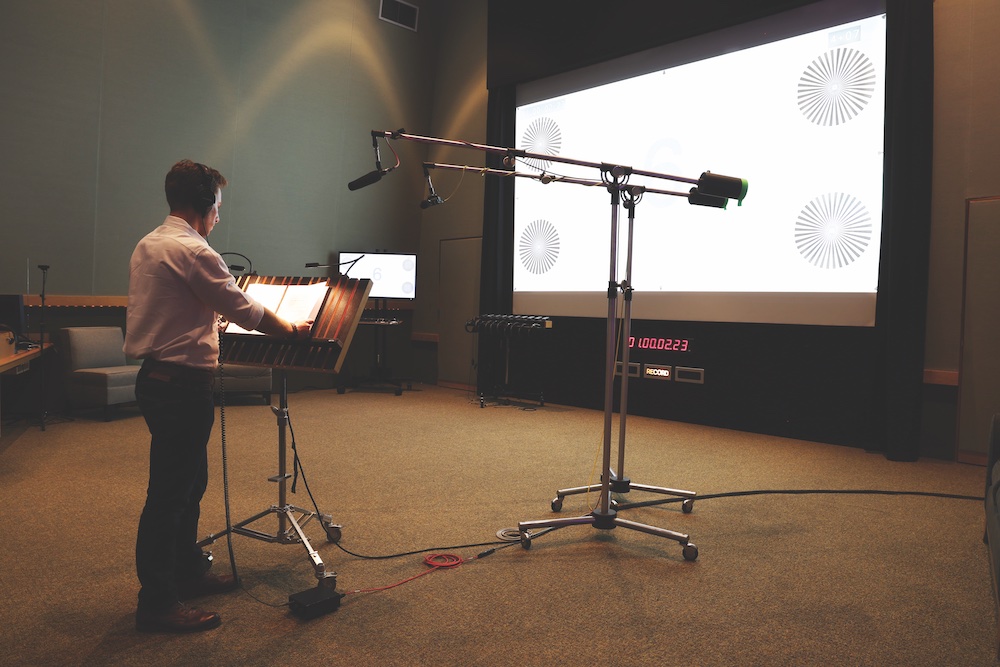
SIDEBAR: MARILYN MONROE ADR STAGE
“I love working on a movie lot because when something doesn’t exist, you make it,” says Marc Gebauer, who served as chief engineer of the scoring stage at Todd-AO before arriving at Fox a decade ago. His first custom project at Fox was to design and build a digitally controlled ADR system into an SSL Duality 24-channel analog console, delivered with an additional, empty master section for the Marilyn Monroe Stage.
“After sitting with the ADR mixers for a while, I realized what was missing from off-the-shelf consoles was being able to manage all the cue mixes,” Gebauer says. He drew out the panel work and controls to confirm the ergonomics after talking with the mixers about what features they needed. “My philosophy is that the equipment should be invisible to the creative process,” he stresses.
For the modular electronics, he consulted with Steve Drummond, SSL’s chief designer at the time, before building his own balanced M-DACs and FET switching: “Everything you hear through this panel is going to affect your overall sound. I didn’t want it to be the weak link, because I know how high-quality SSL is.”
Ultimately, the project took a year to complete, but it was worth the hard work: “It ended up getting a patent.”
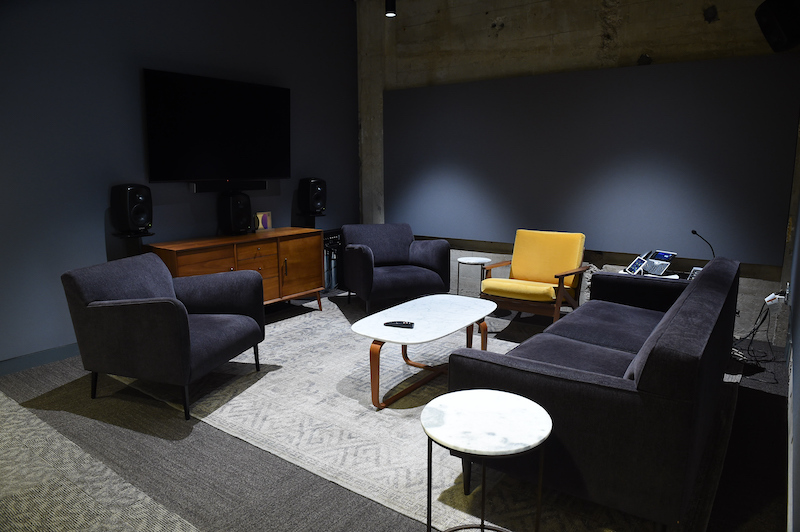
SIDEBAR: MCLEAN PRODUCER’S LOUNGE
“The biggest problem with a small room is not the acoustics but where do you put everybody?” Andy Nelson says. Before Fox built the McLean Stage, a party of about 10 people from a streaming company visited. “They all walked into my room and said, ‘This is a fantastic room. But we’ll never use it; it’s too big.’”
Fox subsequently built the McLean to accommodate nearfield monitoring for home entertainment mixing. “They came back and said, ‘Oh, this is perfect—but we can’t all fit in here now!’” Nelson laughs.
To solve the problem, Fox’s engineering team put together a lounge area just outside the stage door with a large video screen, 5.1 Genelec speaker system, soundbar, intercom and some comfy seating. “The producers can sit in that lounge, watch the mix taking place and talk to the mixers; they don’t have to go into the mix room,” Nelson says. “It’s a great standalone feature that occupies a lovely corner of this building. After I finished Babylon in my room, we even did the small home theater mix in that room, and Damien Chazelle, the director, loved it.”
